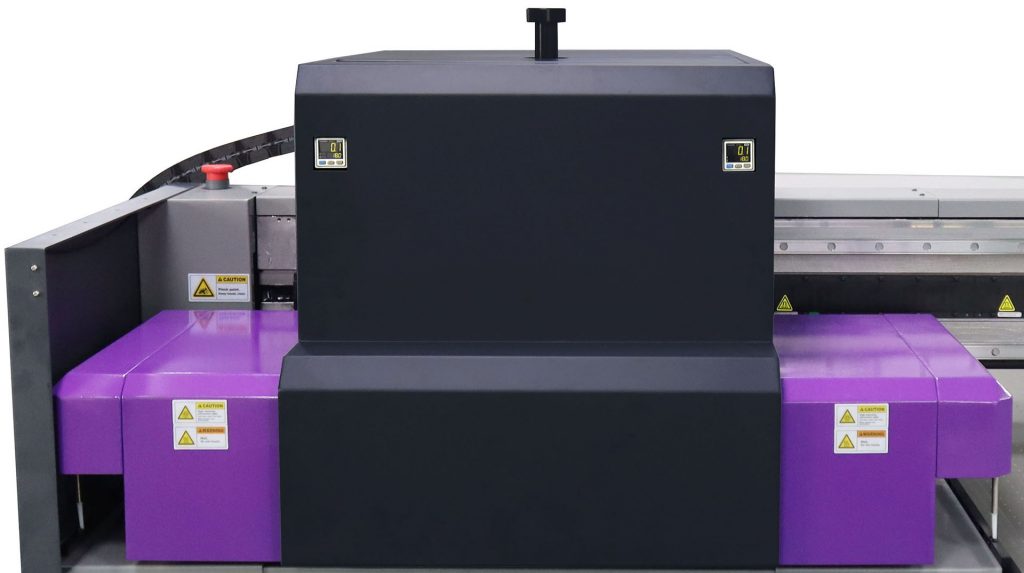UV Flatbed Printer: A Guide to Inkjet Printing Technology
UV Flatbed Printer: A Guide to Inkjet Printing Technology
In the realm of digital printing, UV flatbed printers have emerged as a versatile and efficient solution for a wide array of applications. This technology, which utilizes ultraviolet (UV) light to cure ink instantly, offers numerous advantages over traditional printing methods. This comprehensive guide delves into the intricacies of UV flatbed printing, exploring its working principles, applications, benefits, and considerations for those seeking to adopt this cutting-edge technology.

Understanding UV Flatbed Printing
UV flatbed printers are a type of inkjet printer designed to print directly onto flat or slightly curved surfaces. They are capable of printing on various materials, including glass, metal, plastic, wood, ceramics, and even some textiles. The key distinguishing feature of UV flatbed printers is their use of UV-curable inks, which solidify immediately upon exposure to UV light. This instant curing process enables the printer to produce high-quality, durable prints with minimal risk of smudging or running.
Working Principles
UV flatbed printers operate on a straightforward yet sophisticated mechanism. The process begins with the digital design being sent to the printer, where it is translated into a series of precise instructions for the print head. The print head, equipped with numerous nozzles, moves across the surface of the material, depositing droplets of UV-curable ink in a predetermined pattern. As each section of the design is printed, UV lights positioned above or beside the print bed activate, curing the ink instantly. This curing process ensures that the ink adheres securely to the substrate and is resistant to fading, scratching, and environmental factors.
Applications of UV Flatbed Printing
The versatility of UV flatbed printing technology makes it an ideal choice for a broad spectrum of industries and applications:
Advertising and Signage: UV flatbed printers can produce high-resolution, weather-resistant signs, posters, and banners for both indoor and outdoor use.
Decorative Printing: From custom furniture designs to personalized phone cases, UV flatbed printers offer endless possibilities for creative expression.
Packaging Industry: The ability to print directly on various packaging materials, such as cardboard, plastic, and metal, makes UV flatbed printers valuable for creating eye-catching, brand-consistent packaging.
Architectural and Interior Design: UV flatbed printers can print onto glass, tiles, and other surfaces used in architectural and interior design projects, allowing for unique, customized designs.
Industrial Manufacturing: In industries like automotive and aerospace, UV flatbed printers are used to print labels, serial numbers, and even functional coatings directly onto parts and components.
Benefits of UV Flatbed Printing
Instant Curing: UV inks cure instantly upon exposure to UV light, enabling faster print speeds and immediate handling of printed materials.
Durability: Prints produced by UV flatbed printers are highly resistant to fading, scratching, and chemicals, ensuring long-lasting results.
Versatility: The ability to print on a wide range of materials and surfaces opens up new creative and practical possibilities.
Environmental Advantages: UV inks are generally more environmentally friendly than solvent-based inks, emitting lower levels of volatile organic compounds (VOCs).
High Resolution and Color Accuracy: UV flatbed printers can achieve exceptional print quality, with sharp details and vibrant colors.
Considerations and Challenges
While UV flatbed printing offers numerous advantages, there are also some considerations and challenges to be aware of:
Initial Investment: The cost of purchasing a UV flatbed printer can be significantly higher than that of traditional inkjet printers, particularly for industrial-grade models.
Operational Costs: UV inks and the energy required to power the UV curing lights can contribute to higher operational expenses.
Learning Curve: Operators may need training to become familiar with the specific requirements of UV flatbed printing, including ink management and print bed preparation.
Health and Safety: Prolonged exposure to UV light can be harmful to both operators and those handling freshly printed materials. Appropriate safety measures, such as wearing protective gear and ensuring proper ventilation, are essential.
Conclusion
UV flatbed printing technology represents a significant advancement in the field of digital printing, offering unparalleled versatility, durability, and print quality. Its ability to print directly onto a wide range of materials, combined with the instant curing capabilities of UV inks, makes it an invaluable tool for a diverse array of industries and applications. While the initial investment and operational costs may be higher than those of traditional printing methods, the long-term benefits, including increased productivity, reduced waste, and the ability to create unique, high-value products, make UV flatbed printing a compelling choice for businesses seeking to stay ahead in a competitive market. As technology continues to evolve, we can expect UV flatbed printers to become even more accessible, efficient, and versatile, further expanding their reach and impact across various sectors.
